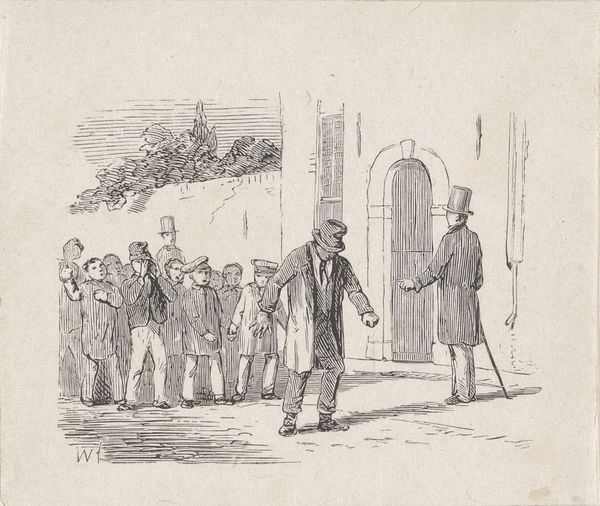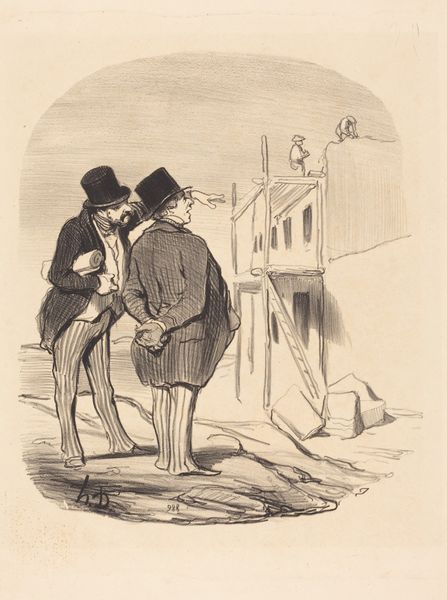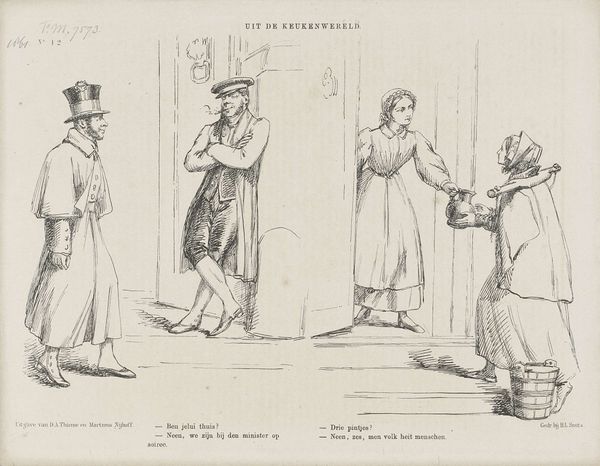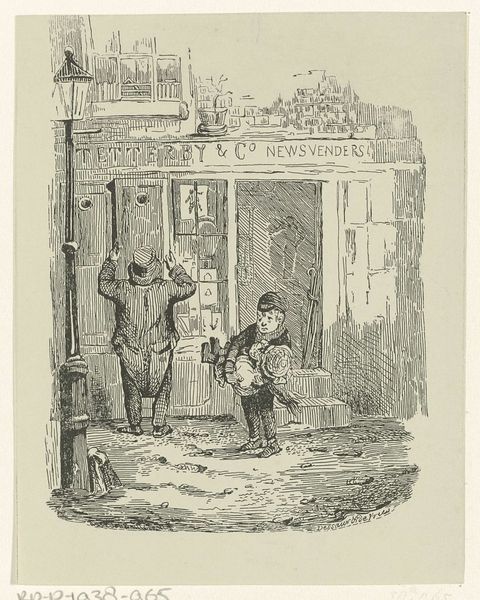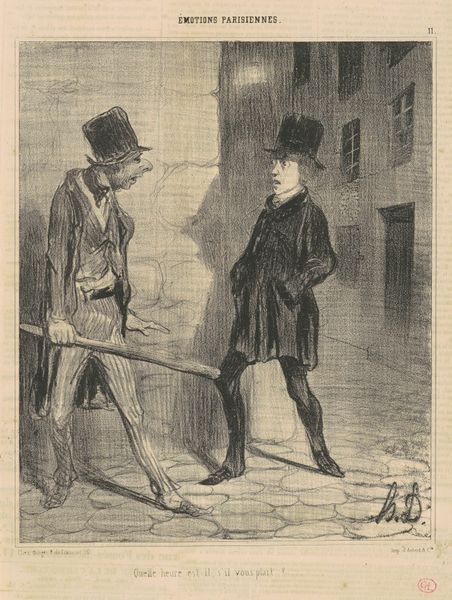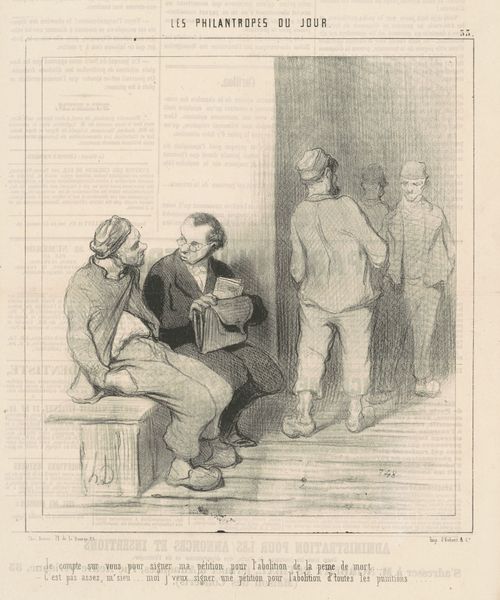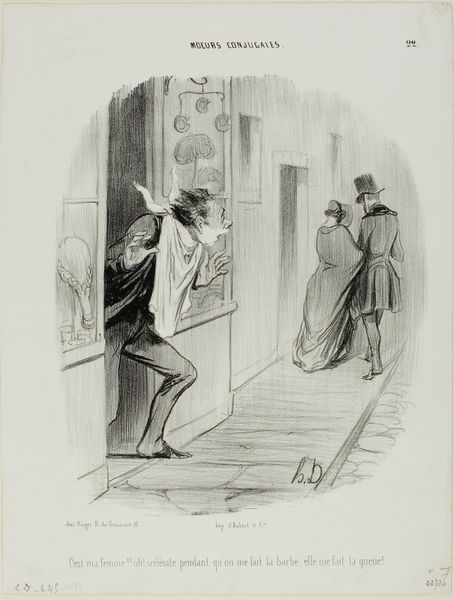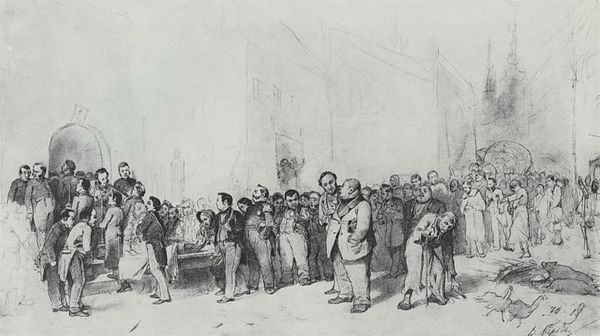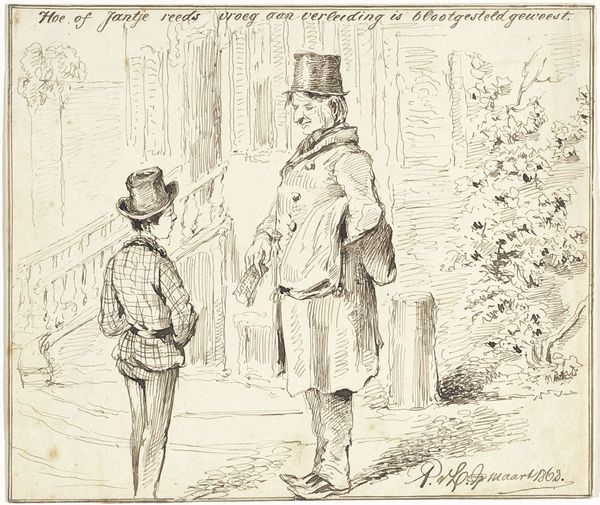
Vader met twee kinderen wijzend naar een bedelaar op straat 1838 - 1912
0:00
0:00
drawing, paper, pen
#
drawing
#
quirky sketch
#
narrative-art
#
sketch book
#
figuration
#
paper
#
personal sketchbook
#
idea generation sketch
#
sketchwork
#
dynamic sketch
#
pen-ink sketch
#
line
#
sketchbook drawing
#
pen
#
cityscape
#
genre-painting
#
storyboard and sketchbook work
#
realism
#
initial sketch
Dimensions: height 94 mm, width 122 mm
Copyright: Rijks Museum: Open Domain
Isaac Weissenbruch made this print of pen and brown ink around the mid-19th century. It shows a father with two children pointing at a beggar in the street. It is a depiction of social inequality, but what does it suggest about the role of art institutions? Consider the social context in the Netherlands at that time. The country was undergoing industrialization, leading to increased wealth for some, but also poverty for others. The print can be viewed as a reflection on the social divide. How were the wealthy expected to respond to the poor? What kind of behaviour was considered acceptable? This image creates meaning through visual codes such as the clothes of the rich and poor, cultural references such as expectations of charity, and historical associations such as a Dutch history of poverty. Historians can use sources like newspapers, personal letters, or charity records to better understand how art like this reflects the views of the time. Ultimately, art can show us how social and institutional contexts shape its meaning.
Comments
No comments
Be the first to comment and join the conversation on the ultimate creative platform.
